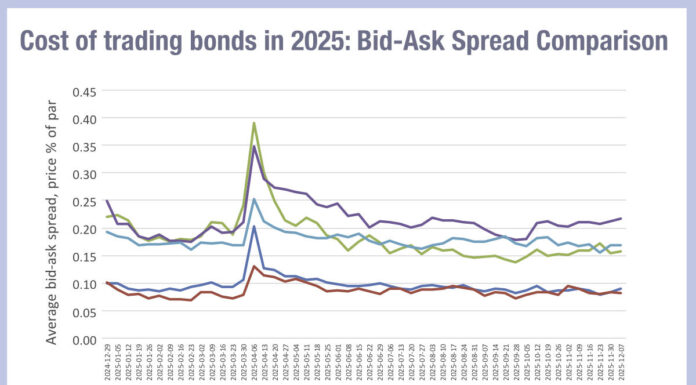S&P Global Ratings has affirmed the United States’ credit rating of ‘AA+/A-1+’ with a stable outlook, explicitly linking the decision to the administration’s tariff strategy as an offset to looser fiscal policy.
S&P writes: “Amid the rise in effective tariff rates, we expect meaningful tariff revenue to generally offset weaker fiscal outcomes that might otherwise be associated with the recent fiscal legislation, which contains both cuts and increases in tax and spending.”
They add: “We affirmed our ‘AA+/A-1+’ sovereign credit ratings on the US The outlook remains stable, reflecting our expectation of continued resilience in the US economy; credible, effective monetary policy execution; high, but not rising, fiscal deficits that underpin the increase in net general government debt; and the US$5 trillion increase in the debt ceiling.”
S&P’s base case balances fiscal slippage from permanent tax changes and higher outlays associated with the ‘Big, Beautiful Bill’ against tariff receipts and institutional strengths. The agency states: “The stable outlook indicates our expectation that although fiscal deficit outcomes won’t meaningfully improve, we don’t project a persistent deterioration over the next several years.”
It also underscores the policy mix behind the call: “Broad revenue buoyancy, including robust tariff income, will offset any fiscal slippage from tax cuts and spending increases.”
Doing the maths, S&P projects that “the general government deficit [… will] average 6.0% of GDP during 2025-2028. It was 7.5% in calendar year 2024,” and expects “net general government debt to approach 100% of GDP” over the medium term.
The second pillar of the rating affirmation is monetary credibility and the dollar’s reserve-currency role. S&P writes: “The credibility of the Federal Reserve is unparalleled, supporting monetary flexibility and the role of the US dollar as the premier international reserve currency.”
They also highlight an institutional framework of “generally effective checks and balances,” while noting that polarisation has constrained proactive fiscal repair.
In its rating affirmation, S&P details the potential triggers for further rating actions.
On the downside: “We could lower the rating over the next two to three years if already high deficits increase, reflecting political inability to contain rising spending or to manage revenue implications from changes in the tax code. The ratings could also come under pressure if political developments weigh on the strength of American institutions and the effectiveness of long-term policymaking or the independence of the Federal Reserve.”
On the upside: “We could raise the rating over the next two to three years if effective and proactive public policymaking results in improved fiscal performance that substantially reduces general government deficits and puts the sovereign’s debt burden on a downward trajectory.”
Tariffs underpin S&P’s near-term tolerance. When analysing the administration’s new budget law alongside trade policy, the committee concludes: “At this time, it appears that meaningful tariff revenue has the potential to offset the deficit-raising aspects of the recent budget legislation.”
While the agency does not expect the package in itself to reduce the deficit, it points to the permanence of corporate tax largesse and potential investment effects, with the overall impact of legislation and tariffs “important to fiscal outcomes”.
Today’s action is at odds with a decade of downward adjustment to the US sovereign credit rating.
S&P first cut the US rating from AAA to AA+ on 5 August 2011, citing debt-ceiling standoffs and rising debt as reasons; it returned the outlook to stable in 2013 and has left the US sovereign rating at AA+/stable since.
Fitch affirmed the US at AAA with a negative outlook in 2020 before downgrading to AA+/stable on 1 August 2023because of fiscal deterioration and repeated debt-limit stand-offs.
Moody’s held the US at Aaa until shifting to a negative outlook in November 2023. It then downgraded the sovereign to Aa1/stable on 16 May 2025, referencing the sustained rise in US debt and interest burdens relative to peers.
As of today, the US is AA+ stable at S&P and Fitch, and Aa1 stable at Moody’s.
©Markets Media Europe 2025












